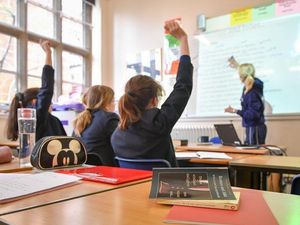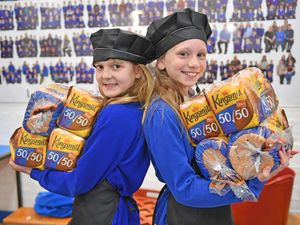Secondary school choices: Find out how pupils fared in your area
Figures have been released showing the number of children in the West Midlands and Staffordshire who secured their first choice secondary school for this year.

It comes as up to 115,000 youngsters were expected to be declined their first choice nationally when they move up to secondary school in September.
Wolverhampton
Around a quarter of students in Wolverhampton missed out on their first choice secondary school, while more than 90 per cent got a place at one of their top choices.
Wolverhampton council said 92 per cent were given a place at one of their top choices, but only 72 per cent got their first choice. The authority said 97 per cent of applications were made by the deadline, up from 83 per cent three years ago.
Councillor Lynne Moran, cabinet member for education, said: “We have a lot of extremely popular schools in the city, and demand for places is increasing all the time and so we are continuing to create additional places to meet this demand.”
Sandwell
More than 3,500 children have landed their first choice secondary school place in the Sandwell borough.
Sandwell Council revealed that a record 72 per cent of parents and carers received their first choice secondary school for their children.
Councillor Simon Hackett, cabinet member for children’s services, said: “We have given nearly 5,000 school places to children and more than ever have received their first choice of secondary school.
“In Sandwell, we are making sure more school places are available including building new schools like West Bromwich Collegiate Academy, due to open in September.”
Dudley
More than 3,000 children in Dudley have been awarded their first choice secondary school. Dudley Council revealed that 81 per cent of parents and carers received their first choice secondary school for their children this year.
The authority added that 10 per cent were given their second choice, and only three per cent were given their third choice. This year, 3,772 applications were received.
Councillor Sue Ridney, cabinet member for chuldren and young people, said: “I am pleased that once again the vast majority of our pupils have been offered a place at their first choice.”
Walsall
More than a quarter of pupils missed out on their first-choice secondary school in Walsall. A total of 72.8 per cent of children were granted a place at their preferred school, while others were forced to settle for places elsewhere.
Walsall Council said it received 3,498 applications. Of those, 2,547 got a place at their top school, 437 got their second choice and 151 were forced to settle for their third option. Some 262 pupils did not secure a place at any of their top five schools.
The number who were successful in getting a place at their first-choice school was similar to Wolverhampton.
Staffordshire
More than nine out of 10 parents have been allocated their first choice secondary school in Staffordshire.
Of the 7,917 applications made for transfer at age 11, nearly 92 per cent of parents have been allocated their first preference school, with 95 per cent allocated one of their top three preferred schools.
This is despite increased pupil numbers putting pressure on secondary school admissions.
County Councillor Philip White, cabinet member for learning and skills, said: “In Staffordshire we have an excellent track record of achieving well above the national average for first preferences.”
The national picture
Based on analysis of birth rates and the number of children leaving primary school, the Good School's Guide estimates that 606,000 applied for places this year nationally - an increase of 23,000 on 2018.
Last year the proportion of children missing out on a place at their top choice of secondary school rose for the fifth year in a row.
The Department for Education said more than 825,000 school places had been created since 2010.
Bernadette John, director at The Good Schools Guide, said: "In recent years, some local authorities have struggled to find enough places at primary school level and now we have begun to see the impact on secondary schools.
"And, for the next few years, it will get worse."
Geoff Barton, general secretary of the Association of School and College Leaders, said: ""There is intense pressure on secondary school places in some areas of the country for schools rated by Ofsted as 'outstanding' and 'good' and this results in parents missing out on their preferred choice.
"This situation will become more challenging because the number of pupils in secondary schools is rising and is expected to increase by 428,000 over the next seven years."




